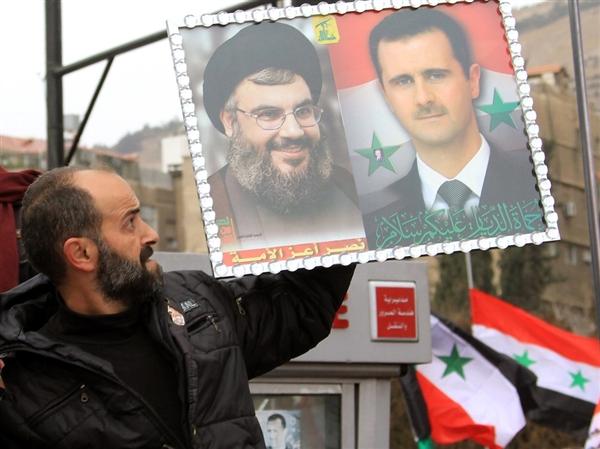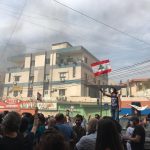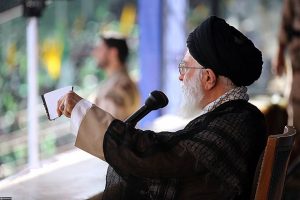by Wayne White
Reacting to several recent developments in the Syrian war, Lebanon’s Hezbollah organization has escalated dramatically its direct military role in that fighting. This is Hezbollah’s first major foray on the ground into a conflict inside another country, and it will put strains on its military cadres as well as its Lebanese political base. For quite some time now, Lebanon–beyond the issue of Hezbollah–has been drawn gradually into events across the border, but Hezbollah’s armed intervention on the side of the Assad regime probably will mean an even deeper intrusion of the Syrian crisis into the affairs of a potentially unstable Lebanon.
Long before Hezbollah Secretary General Nasrallah’s April 30 public revelation that his combatants were now fighting in large numbers inside Syria to help save the Assad regime, the group was known to have been involved to a more limited extent. Reporting suggests this has involved mainly training (perhaps for the Syrian army as well as pro-regime Alawite Shabiha militia personnel) in the more challenging urban fighting as well as the asymmetric warfare waged by the rebels in the countryside. It also is likely that Hezbollah, along with Iran, helped organize the Shabiha into the more coherent Jaysh al-Sha’bi (“People’s Militia”) in 2012. Meanwhile, as increased numbers of Syrian refugees and rebel fighters have sought sanctuary in eastern Lebanon, Hezbollah has clashed with rebel elements and gathered intelligence on them for the Syrian regime.
Several developments affecting Syria since mid-2012 doubtless got Hezbollah’s undivided attention. The stream of reverses suffered by the Syrian regime in 2012 confronted Hezbollah with the very real possibility of losing its direct line of supply from Iran. The rise of Sunni Arab jihadist groups (implacable enemies of the Shi’a) to the forefront of increasingly successful rebel forces also probably alarmed Hezbollah. And Israel’s increasingly bold air attacks aimed at denying Hezbollah significant additional long-range weapons systems must have been a concern. Finally, in recent months, Syrian government forces rebounded, and Hezbollah saw for the first time in over a year the possibility that the Syrian conflict might be turned around to allow the Assad regime to survive. Still, Hezbollah must know regime forces remain stretched thin, exhausted, and still vulnerable (especially should there be considerably more robust Western intervention in support of the rebels).
In this context, the commitment of Hezbollah fighters to the Syrian regime’s attempt to retake the town of Qusair just over the border in the face of fierce rebel resistance is understandable. Qusair is part of the effort regime forces have been making for two months, and with quite a bit of success, to drive rebel forces farther from Damascus and secure government lines of communication from central Syria to key ports and large, loyal Alawite populations along the coast.
The toll on Hezbollah, however, will be considerable. Already coffins of dead Hezbollah fighters have been streaming from the Qusair battlefront into Hezbollah neighborhoods in Beirut. Scores of them reportedly have been killed by rebel defenders in Qusair in what has been a protracted slugging match. Should this flow of casualties continue unabated (or even rise) as Hezbollah wades deeper into the Syrian war, backing could erode among its own support base in Lebanon.
And as Hezbollah’s involvement continues, it will become ever clearer to its military wing that it has taken the field against a mirror image of itself across the border. In most cases, Hezbollah fighters are in combat with militant Islamic rebels fighting fiercely (and cleverly) in defense of their hometowns and neighborhoods.
This is very similar to what the Israelis encountered battling Hezbollah in South Lebanon, although in Syria Hezbollah fighters will not have at their disposal what Israel used to offset Hezbollah’s advantage in sheer fanaticism: highly advanced tanks, accurate and continuous artillery support, and rather precise and frequent air strikes. The Syrian army has some related capabilities, but not nearly as effective as what the Israelis can muster. Moreover, Syrian troops probably will be the main beneficiaries of whatever such support is available, with Hezbollah often fighting only in its traditional role as more vulnerable light infantry.
Meanwhile, by wading into a sectarian conflict across the border, Hezbollah’s political (and military) role could be tarnished back home in Lebanon. Its fighting alongside Syrian troops will be resented deeply by most of Lebanon’s more than a million Sunni Arabs as well as many Christians. And Hezbollah’s recent political recognition by the Lebanese cabinet as an armed organization with the right to “liberate or recover occupied lands” could well be questioned.
Just within the past week over 200 people have become casualties in fighting between Sunni Arab and Alawite neighborhoods in the northern Lebanese city of Tripoli. Rockets have fallen into a pro-Hezbollah neighborhood in Beirut and the mainly Shi’a eastern Lebanese city of Hermel. Several Lebanese soldiers were killed earlier this week by Syrian rebel elements or their Lebanese sympathizers. And, in reaction to the turmoil, on May 29 Lebanon’s parliament speaker called for a Friday vote to postpone legislative elections–a first since the Lebanese civil war largely ended in 1990.
We must bear in mind that much of today’s Lebanon was carved out of what had been regarded as Syria by France in 1920. The resulting sectarian mélange essentially self-destructed in 1975 in Lebanon’s bloody civil war. Thus, some spillover from the violence in Syria was inevitable, and could pose a threat to the truce that ended the civil war over 20 years ago. In fact, in addition to more Lebanese unrest, Lebanon’s powerful Sunni Arab community centered in the north could react to Hezbollah’s intervention by sending hordes of Islamic militants across the border to join up with Syrian rebels—just as hundreds of young males from that community went off to fight with Sunni Arab insurgents in Iraq some years ago.





“Just within the past week over 200 people have become casualties in fighting between Sunni Arab and Alawite neighborhoods in the northern Lebanese city of Tripoli.”
Why isn’t the author of this article prepared to state the truth that it is salafist and bin Ladenite Sunnis in Tripoli who are attacking the Alawites?
“In most cases, Hezbollah fighters are in combat with militant Islamic rebels fighting fiercely (and cleverly) in defense of their hometowns and neighborhoods.”
Since most of the salafist fighters in al-Qusayr seem to be Chechens and other foreigners, it is quite clear that this author’s definitions of hometowns and neighborhoods are as expansive as America’s definition of its backyard, i.e., the whole world.
Seems like he’s drunk too much NATO Kool Aid. I expect better of this blog.